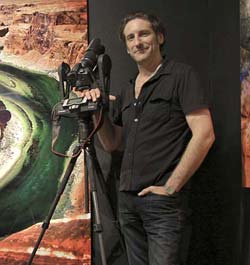Beyond Mega-pixels
It has been said that 'photography' is not really a suitable term for the kind of work that Phil produces as the technique and work involved in producing these images is very different to simply clicking a shutter button. The equipment Phil uses was developed in part by NASA and is the same kind that is used on the Mars Rover, used to capture super high resolution images of Space phenomena. Many of the images are the product of hundreds of images joined together to produce an enormous photograph that is not measured in megapixels but gigapixels. The advantages of this are many and not only the sheer size, but the clarity and distortion free end result as each image involved in the panorama will always use the 'sweet spot' of the lens.To learn more about how Phil goes about producing these spectacular images, see below and also see the Sarasota Style & Design article written about his work here.



 See the complete portfolio of images
See the complete portfolio of images
 Learn about what makes these pieces so impressive
Learn about what makes these pieces so impressive
 Artist biography and statement
Artist biography and statement


